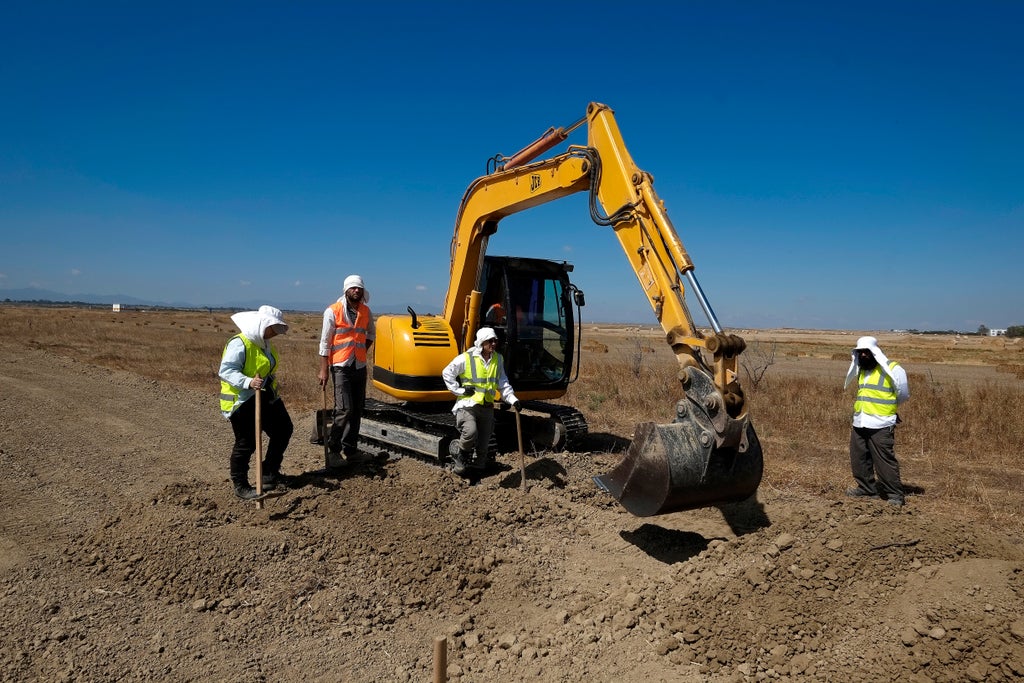
U.S. academics who help locate Holocaust mass graves and execution sites in Eastern Europe have used ground-penetrating radar to seek burial sites on Cyprus of people missing since the 1974 Turkish invasion and earlier interethnic strife.
Team leader Harry M. Jol told the Associated Press on Friday that they scanned several pre-selected sites between Dec. 28 and Jan. 6, using a system that creates subsurface images without the need to dig.
Traces of ground disturbance from human activity were found among the half-dozen sites searched, but confirmation of burials would require excavation.
“Very few other methods have the resolution that GPR has and can map in a grid-like format,” Jol, a professor at the University of Wisconsin-Eau Claire’s Geography and Anthropology Department, said in an email. “We used the same equipment for (hundreds of) surveys at sites worldwide.”
Jol said he passed on to the Committee on Missing Persons (CMP) — an expert group that has since 2006 been seeking more than 2,000 missing Greek Cypriots and Turkish Cypriots — information on where soil disturbance was found.
“It is these disturbances that we map ... be it buried building structures, mass graves ... unmarked (graves) ... and other structures," said Jol, who worked with assistant Joe Beck.
The data continue to be processed and interpreted in collaboration with CMP staff, while Jol said there are plans for his team to return to the east Mediterranean island nation in the near future.
Leonidas Pantelides, the Greek Cypriot member of the CMP, told the Associated Press that the team visited six sites where there was information that the remains of missing persons could be located. He said it’s hoped that the academics will bring additional equipment on their next visit that could yield even more precise results.
The academic’s trip was mostly funded by the U.S. government with support from the CMP — also composed of a Turkish Cypriot member and a third-country national selected by the United Nations — which relies on donations to operate.
CMP experts have so far exhumed the remains of 1,114 people and identified 1,023. However, 778 Greek Cypriots and 201 Turkish Cypriots still remain missing since the 1974 Turkish invasion, which split the island along ethnic lines, and intercommunal fighting in the decade before. The invasion followed a coup that aimed to join the island with Greece.
Digs at potential burial sites have primarily relied on information provided by witnesses or individuals with information about the disappearances. But locating such sites has become increasingly difficult amid reluctance by some to offer information, and because many eyewitnesses have since died.
Beck said the team of academics has over the last five years travelled to countries including Poland, Lithuania and Latvia in search of mass graves dating back to World War II.
They primarily used GPR, but also drones that capture images across the electromagnetic spectrum. Beck said GPR is currently being used in Canada to locate potential Indigenous graves.
Both Jol and Beck praised the CMP’s professionalism, which they said could serve as an example internationally.
“Working on the various sites, given the context and the personal connections the various members of the CMP had to the locations evoked, a powerful emotional experience,” said Beck.







